Sometimes, computerised Go-To telescopes aren’t all they’re cracked up to be.
Yes, they can automatically slew to an object in the night sky that otherwise a beginner would struggle to find, but such motorised scopes still need to be aligned with bright stars.
For beginners, whose only way of navigating the night sky is by using a smartphone app, that can be tricky.
So why not just use that app to align the telescope?
That’s the thinking behind Celestron’s StarSense technology, which provides a free app and a carefully designed adaptor to fuse old and new techniques and create a novel way of exploring the night sky.
This telescope features in our list of the best telescopes for beginners.
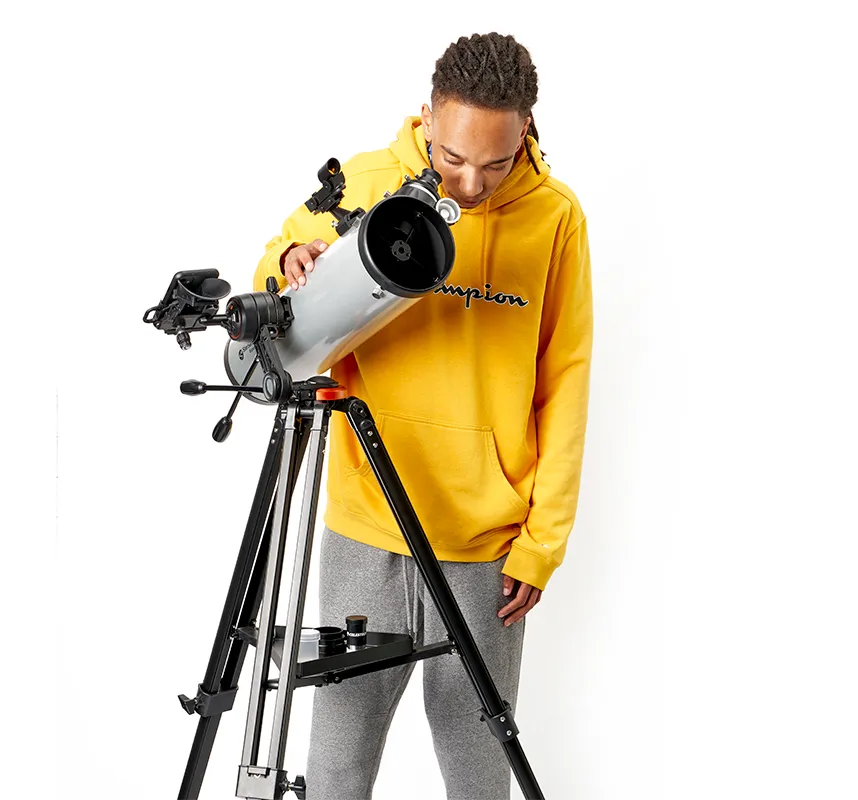
The Celestron StarSense Explorer DX 130AZ 5.1-inch Newtonian has a focal length of 650mm, giving a focal ratio of f/5, while the tube is 630mm long.
It’s mounted on a manual altaz ‘Push-To’ black aluminium tripod that proves this telescope’s weak point.
It’s steady enough for the job once the spreader accessory tray is in place, but only just, and we did experience some vibrations after each movement.
Since there’s no motorised tracking mount, astrophotography is out of the question, save for a spot of afocal photography through the eyepiece.
That, of course, requires a smartphone, which isn’t going to be possible if you use this telescope as the maker intended you to (unless you have a spare phone).
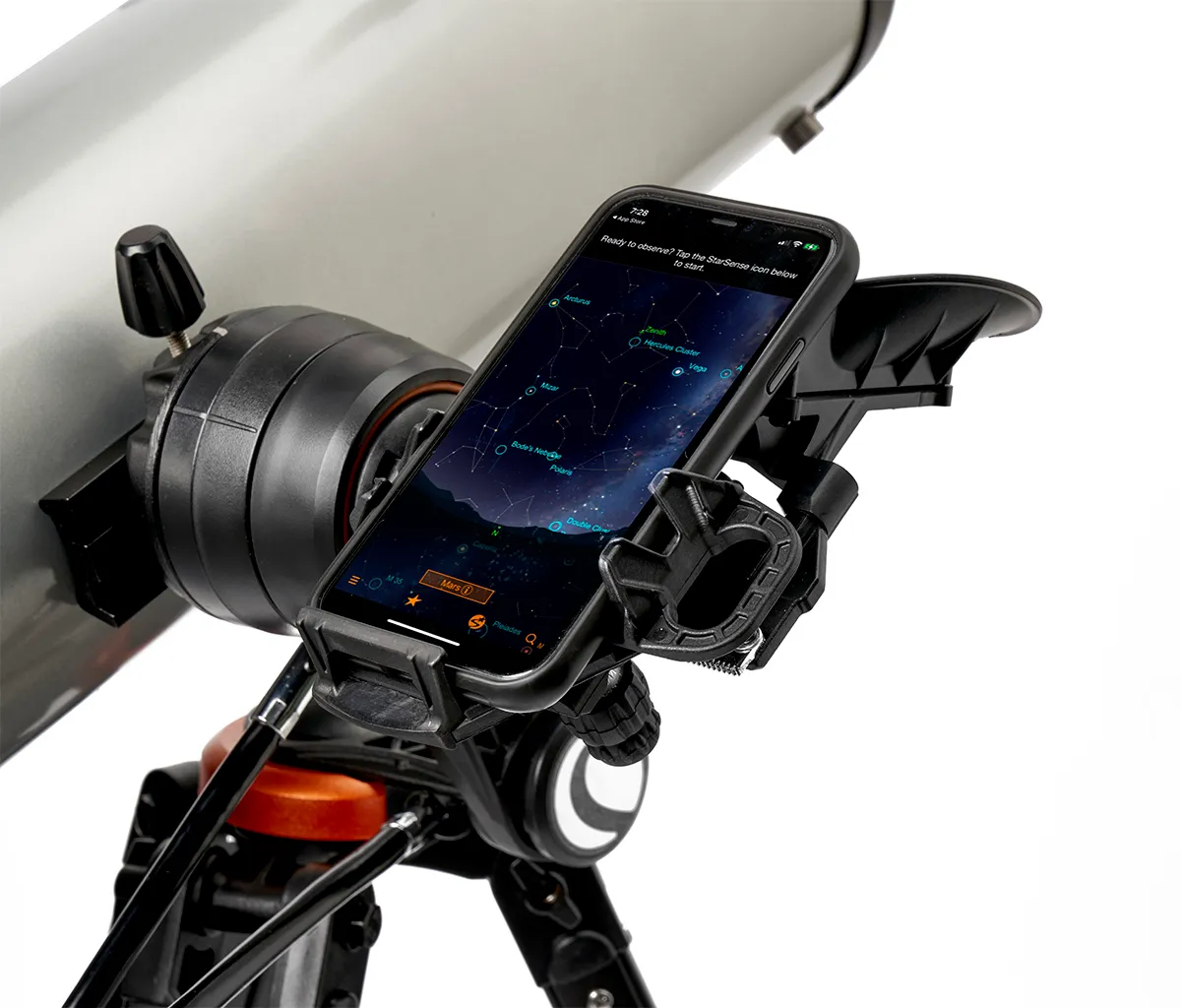
Although it’s not essential to make the telescope usable, Celestron’s StarSense Explorer app is at the core of how this combination works.
Also included with the DX 130AZ are two 1.25-inch eyepieces, 25mm and 10mm, which give 26x and 65x power, respectively.
The supplied low-power eyepieces are nothing special and could easily be upgraded (a Barlow lens being the most obvious candidate), but they’ll serve beginners well.
A red dot finder is also provided if you want to ignore the app and aim the DX 130AZ completely manually.
Despite the StarSense app being relatively simple, it does take a little getting used to.
For example, when you first begin your session, it asks you to point the telescope towards a clear patch of sky with stars, and to wait until the red bullseye on the screen turns yellow.
Then you simply follow the directions to your target, wait for it to turn green, and look through the eyepiece.
The trouble is, if you use the app’s red-light mode, which you should if you want to preserve your night vision, those colours obviously disappear.
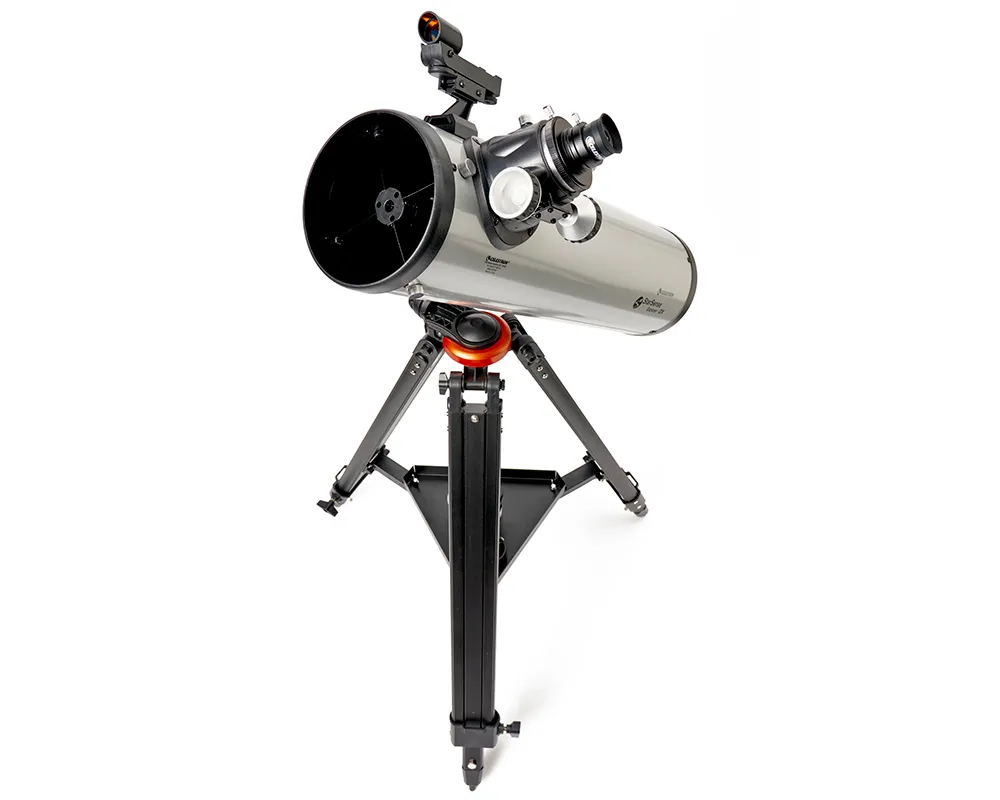
We also had trouble aligning the telescope during the bright nights between a first quarter Moon and a full Moon.
Manually aimed at the terminator across the lunar surface we were immediately delighted by the twin-knobbed, low-gear focusing control, which is grooved, rubberised and easy to operate with gloved hands in the cold.
It quickly produced sharp, precise and contrast-rich views of the crater-crowded southern highlands.
The StarSense app’s lists of ‘tonight’s best objects’, which are each labelled ‘City Viewable’ or ‘Dark Sky Viewable’, help to keep expectations in check for those in light-polluted urban areas.
Used under moonless skies, the DX 130AZ impressed us with its clear and crisp low-power views of deep-sky sights, including the Orion Nebula, M42, and the M35 open cluster in Gemini.
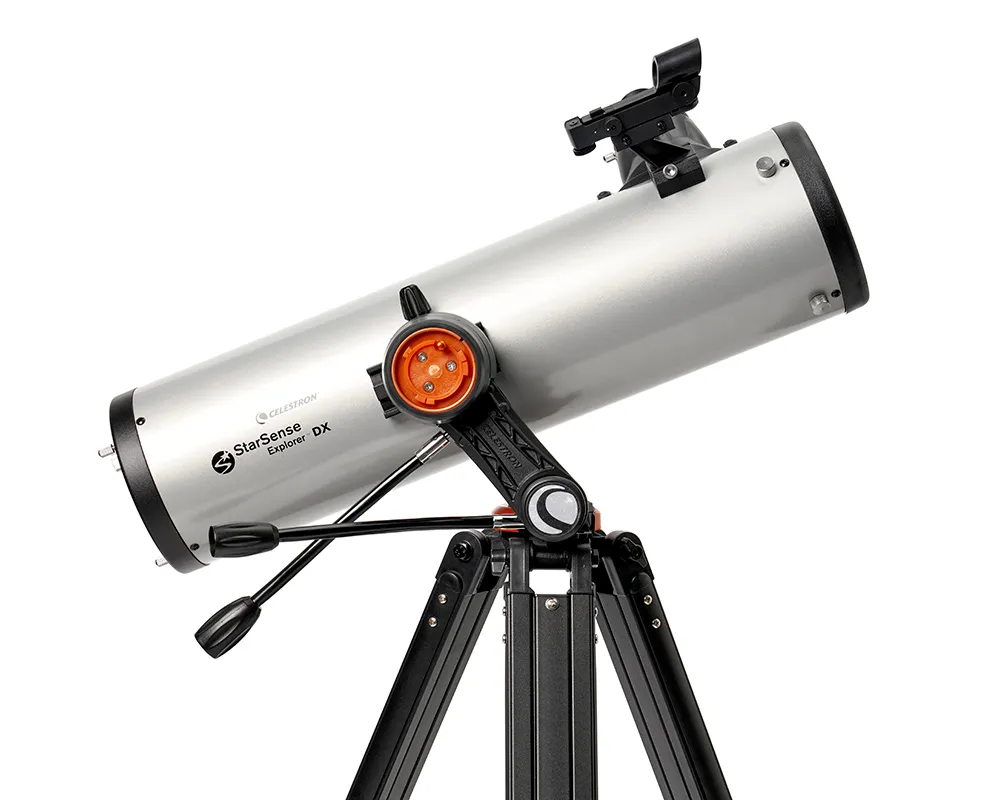
However, we did find that the tripod itself got in the way of us aiming the DX 130AZ at anything remotely close to the zenith.
It may be an all-new way of aligning and using a telescope, but the StarSense app does have one hangover from the handsets provided with most Go-To telescopes, which is audio.
With spoken-word descriptions of hundreds of objects, and a great deal of advice on how and when to observe each object, the StarSense app – together with the DX 130AZ telescope it aids – produce a delightfully old-school package of smartphone app and manual telescope.
This cleverly unites the old and new and keeps the asking price relatively low.
Using the Explorer DX 130AZ app
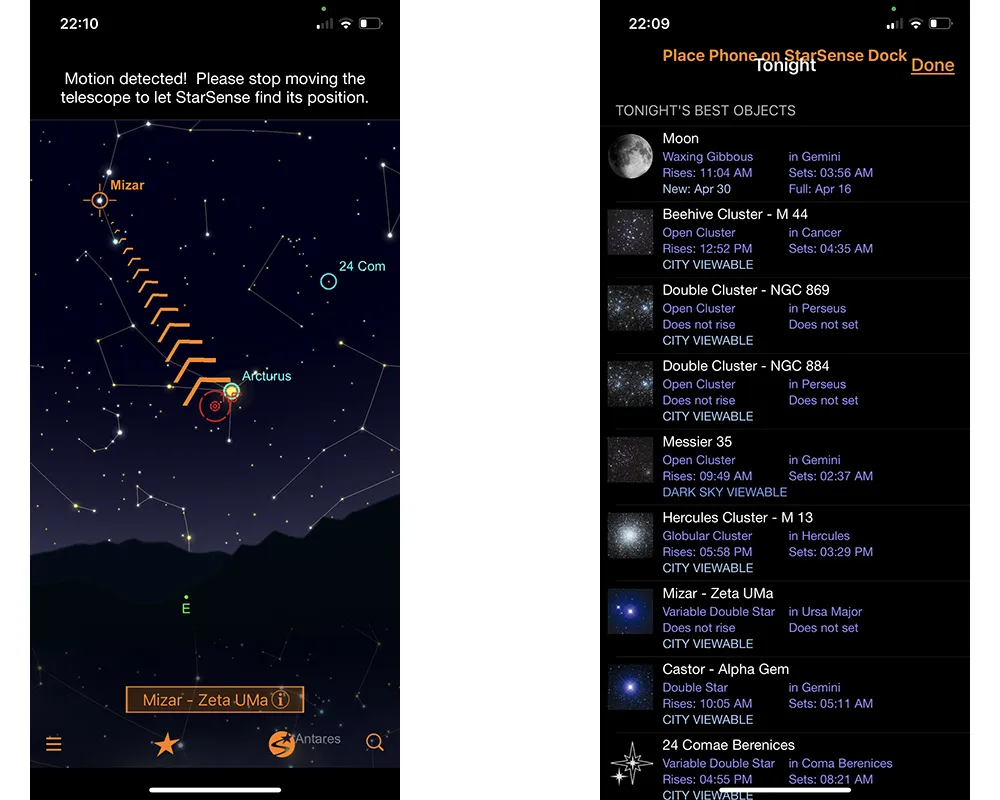
Contrary to what Celestron’s marketing campaign may have you believe, the Explorer DX 130AZ won’t magically use your smartphone to align itself to the night sky.
In reality, it’s a little more manual than that.
On the other side of the mounting arm to the telescope is the StarSense smartphone adaptor dock.
With the free StarSense Explorer app downloaded from Google Play or the Apple App Store, you simply insert your smartphone into the holder and align its camera with the mirror underneath.
It then uses its StarSense sky recognition technology to match what your smartphone’s camera sees on the mirror with its planetarium database.
The app then gives you on-screen arrows and targets to lead you to your chosen object, as you manually move the telescope, virtually zooming in the closer you get and changing those arrows and targets from red to green.
You then take your hands off the telescope and look through the eyepiece and you should see your target.
If you don’t, there are two slow-motion controls for fine-tuning its position.
If apps are your thing, read our guide to the best astronomy and stargazing apps.
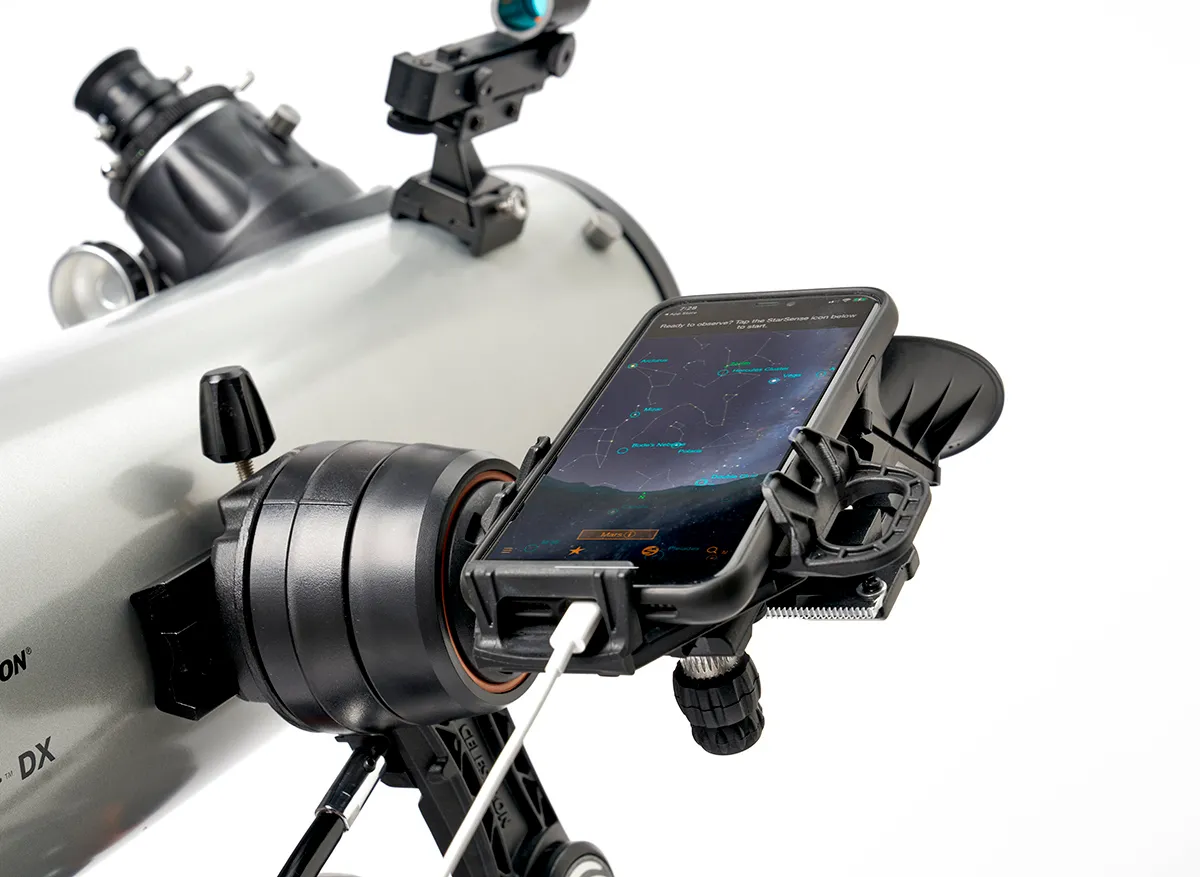
Celestron Explorer DX 130AZ best features
1
Dual-axis slow- motion controls
Slip clutches and geared slow-motion controls are provided in both axes to make it easy to fine-tune the field of view, and then follow it as it drifts through. These are easy to operate as you follow the app’s directions to home in on your targets.
2
Accessory tray
Although most telescopes have one for placing eyepieces, here it’s particularly useful because it can also hold a portable smartphone battery, so you can keep the StarSense app running for long periods. The tray doesn’t feel particularly sturdy when it’s being assembled, but it stayed in place all the time during our review.
3
Telescope tube
The telescope is a classical Newtonian reflector with a 130mm primary mirror with a focal length of 650mm, giving a focal ratio of f/5. It is supplied with 25mm and 10mm 1.25 inch-fit eyepieces, a red dot finder and an altaz manual mount.
4
Cable management
Relying on an app for celestial navigation is useful, but using StarSense during a long observing session can drain a smartphone’s battery. We’re impressed that Celestron has left a gap in the foot of the smartphone clamp to trail a cable to a portable battery, which can easily sit on the accessory tray.
5
Universal smartphone holder
Fitted with a spring-loaded tab, any size of smartphone is kept snug in this simple yet strong device beside the mount. Behind it are two left/right and up/down knobs to align the smartphone’s camera with the 35mm x 70mm mirror just above and behind.
Vital stats
- Price: £479
- Optics: 130mm (5.1-inch) Newtonian reflector
- Focal length: 650mm, f/5
- Mount: Altaz with slow-motion controls
- App control: StarSense Explorer app with StarSense Sky Recognition technology and planetarium
- Extras: StarSense dock for your smartphone, 25mm and 10mm eyepieces, StarPointer red dot finder
- Weight: 8.1kg
- Supplier: Celestron
- Tel: 0118 467 1200
- www.celestron.com
This review originally appeared in the July 2022 issue of BBC Sky at Night Magazine.
